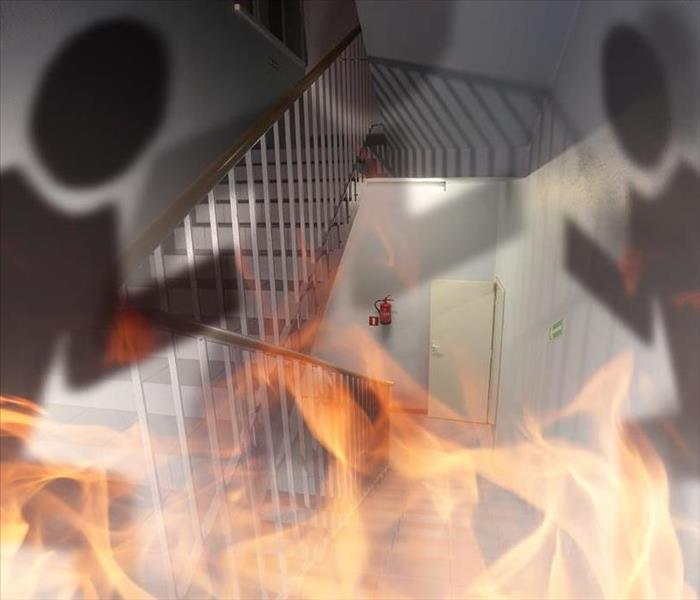Creating a Fire Escape Plan for Your Home
6/24/2022 (Permalink)
While no one hopes to experience a fire in their home, it’s important to be prepared ahead of time. From carrying homeowners’ insurance to knowing which local fire restoration company to call, you need to have a plan that outlines what to do in the event of a fire. If your home in Pueblo, CO, catches fire while you and other household members are there, do you have a plan for a safe exit? Now’s the perfect time to come up with a fire escape plan. Here’s what you need to know.
Developing a Fire Escape Plan
Creating an escape plan should be done collaboratively with everyone in the household, including children. Consider the following tips:
- Walk through the home making note of all possible exits from the house, including doors and windows.
- Your plan should also account for exiting the home from upper floors.
- Create a map of the home with exits and smoke alarms for young children.
- Make sure your routes for escape are clear and free of obstacles.
- Confirm that doors and windows are easy to open.
- Determine an outdoor meeting place that everyone will head to. It should be a safe distance from your house and marked on your map.
- Your plan should designate an official assistant for helping infants, the elderly, and anyone with limited mobility escape. Indicate a backup in the event the first designee is not home during a real emergency.
Coming up with a plan allows you to take stock of any changes that need to be made to help everyone exit the building quickly and safely.
Testing Your Plan
Practice makes perfect, and you’ll need to test your plan to see if it’s effective. Consider these tips for testing your fire escape plan: Practice your fire plan at different times of the day, including the nighttime. Commit to fully exiting the building, making accommodations for those whose mobility is limited.
While you don’t want to frighten young children, it’s important to test your plan when they’re asleep. This lets you know if your smoke alarms are effective at waking them up. Your escape plan may need to designate someone responsible for waking them up.
Test alternate escapes
In a real home fire, the quickest route may not be the safest. Everyone should practice getting low to simulate crawling under smoke. Keep ladders near windows for safe exits from the second floor.
Planning for No Escape
Your fire preparation plan should also account for a situation where home escape isn’t possible. Fire or smoke may block all exits. Come up with a plan for isolating family members from fire or smoke. This includes closing doors, sealing openings, and covering vents to limit the spread of fire and smoke. Household members should also know how to open windows to let in fresh air. Be sure to include flashlights or other devices to direct firefighters to your location.
As a responsible homeowner, you want to make sure you and your household are prepared for a fire. A well-developed and practiced fire escape plan is your best chance for survival. Accidents can happen at any time of the day, so it’s important to practice executing your plan at various times and under different circumstances.





 24/7 Emergency Service
24/7 Emergency Service
